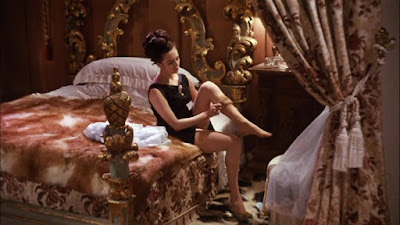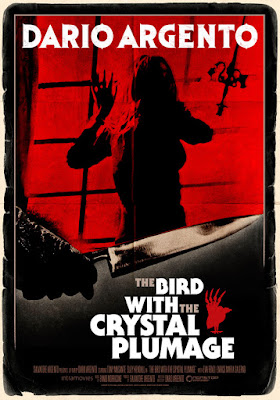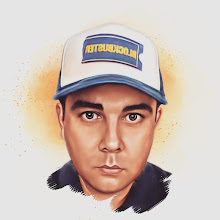 "Haunted Honeymoon" *** (out of ****)
"Haunted Honeymoon" *** (out of ****)Gene Wilder's "Haunted Honeymoon" (1986) is both a homage to classic comedy / horror movies like "The Cat and the Canary" (1939) with Bob Hope and a love letter to his wife Gilda Radner, in the last movie the two starred in together.
Wilder, who co-wrote the comedy "Young Frankenstein" (1974) with director Mel Brooks, perhaps wanted to repeat his success as Brooks tried later with "Dracula: Dead & Loving It" (1995). Although the bar isn't set very high, Wilder's comedy may come off slightly better than Brooks' Dracula effort.
Wilder understands a comedy / horror movies needs atmosphere. You need to treat the material as two separate movies. Take your horror portion seriously. "Haunted Honeymoon" takes place in an old, scary looking mansion. As the opening credits play we see someone has been stabbed.
Pay attention to this scene. It establishes Gene Wilder's philosophy of comedy. You give the audience the required information it needs to advance the plot and then you hit them with a joke. It is the opposite of his buddy Mel Brooks who tries to put in a joke before, during and after the set-up.
Speaking of Mel Brooks, Wilder also uses composer John Morris, who scored nearly all of Brooks' comedies. Morris, as usual, creates a terrific score, capturing the mood of those classic horror movies of the 1930s and 40s. Another example of taking the time to treat the horror portion seriously.
For the comedy, Wilder and co-writer Terence Marsh, have come up with a pretty good scenario. Radio actor Larry Abbot (Wilder. Sounds a lot like Larry Talbot, the Wolf Man, doesn't it?) is engaged to his co-star Vickie Pearle (Radner). This has triggered a deep rooted fear in Larry, causing him to have momentary blackouts, which upsets the sponsor of his radio show. Larry's uncle, Dr. Paul Abbot (Paul L. Smith), has studied Larry's case and believes he has a cure. Larry needs to be scared to death. A perfect opportunity arises when Larry and Vickie go back to his childhood home, the old mansion, to celebrate their engagement.
The setting and the premise lend themselves naturally to create comedy within a horror atmosphere. Wilder and Marsh, as a result, don't have to write random comedy sequences, breaking away from the horror premise. The comedy is a result of the horror due to Larry's reaction to his family's attempts to scare him to death. That is how comedy / horror is suppose to work.
Take a scene where Larry, about to go to sleep, notices a monster walking down towards him, from the ceiling. Larry is terrified. He tries to alleviate his fear by convincing himself the monster isn't real. To demonstrate his point he reaches out to touch the monster's face and slowly begins to realize the monster is indeed real. You have a scary set-up and humor that blends with the situation.
Another sequence doesn't lend itself so easily to both genres and feels a bit contrived. It feels like a comedy sequence randomly created. Larry gets into a fight with the butler, Pfister (Bryan Pringle) and knocks him out. Police are investigating the property and Larry must hide Pfister's body. I won't reveal the punchline, because it is funny, but here is an example of the horror not naturally lending itself to comedy.
But this has nothing on a sequence where Aunt Kate (Dom DeLuise in drag) performs a rousing rendition of the old jazz standard "Ballin' the Jack" with Vickie. Like a Brooks comedy, Wilder throws in a musical number that serves no purpose to the rest of the movie.
On average the performances are good with Wilder and Radner displaying a good amount of chemistry between them. I don't think this showcases Radner at the top of her game though it does have some nice moments and she has good banter with Wilder's character. Dom DeLuise on the other hand doesn't come out looking so good. This isn't a performance to take serious. It is a caricature. And worst of all, it isn't funny. It doesn't seem like much thought and care went into this character.
What I appreciate most about "Haunted Honeymoon" however are the nods to earlier movies. There is a werewolf character that looks an awful lot like the one in "The Undying Monster" (1942). That couldn't have been a coincidence. Being that the movie centers on radio actors and mystery and death, it makes me personally recall titles like "Whistling in the Dark" (1941) with Red Skelton and "The Cat and the Canary".
Whatever there is to admire however ultimately "Haunted Honeymoon" lacks in the big laughs department. That may explain why the movie was a box-office flop. It hasn't aged well either. Only recently has it been put on DVD. You won't hear many praise the movie. The studio didn't even provide critics an advance screening. Imagine if Siskel & Ebert had given it two thumbs up. It might have added to the box-office. Or not, if they didn't like it.
While the big laughs may not be there, I do like what "Haunted Honeymoon" is trying to accomplish. I like its old-fashion spirit. I find Wilder and Radner to be likable actors. I appreciate the costume and production design. I like the musical score. "Haunted Honeymoon" does a lot of technical things right. Without revealing plot points, it could have used a rewrite or a different editor, who may have cut essential scenes.
Unfortunately after this movie's release Radner and Wilder would never appear again in a movie together. Radner died of cancer at the age of 42 in 1989. "Haunted Honeymoon" was the last feature length movie she appeared in. Wilder considerably slowed down after her death. He appeared in two movies with Richard Pryor; "See No Evil, Hear No Evil" (1989) and "Another You" (1991). Gene Wilder died in 2016 at 83. He only directed four movies and "Haunted Honeymoon" is not the best of them. Most would say that honor belongs to "The Woman in Red" (1984), which co-starred Radner and was a remake of the French comedy, "Pardon Mon Affaire" (1976).
"Haunted Honeymoon" is a bit of an uneven comedy. It creates a nice atmosphere and does a lot of things right. It lacks some big laughs and doesn't develop its supporting characters. Wilder and Radner are fun to watch but neither is at the top of their game. It might be worth watching if you like comedy / horror movies of the 1930s and 40s.
































